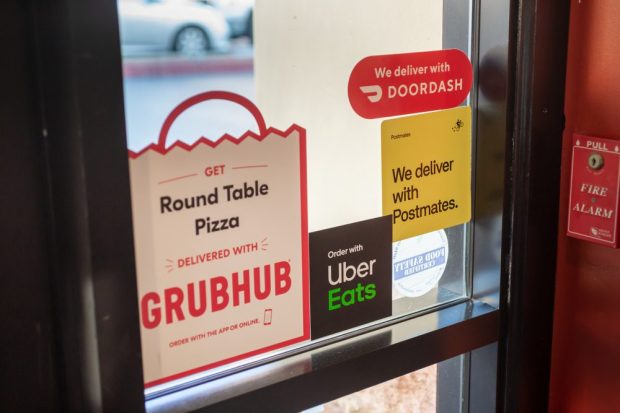Delivery Services Leverage Discounts and Subscriptions to Retain Price-Sensitive Customers

As aggregators look to maintain customer frequency amid inflation, affordability is key.
In fact, many consumers are engaging with restaurant delivery services more specifically because these options have become more attainable within their budgets, according to research from PYMNTS’ new exclusive report “Connected Dining: Third-Party Restaurant Aggregators Keep the Young and Affluent Engaged.”
The study, which draws from a survey of nearly 2,300 United States consumers conducted in March, finds that 39% of those who use aggregators state that they do so because the offers and discounts have gotten better. Plus, one in three states that they do so because prices have become more accessible.
Conversely, those who have been pulling back on using aggregators are also motivated by prices, with 82% of those who have been using aggregators less often over the last year noting that ordering from third parties is more expensive than making purchases directly from restaurants.
Consequently, for aggregators both to drive frequency among their loyal customers and to prevent those who are hesitant from scaling back, it is key for them to keep an eye on prices. For instance, DoorDash, the nation’s leading aggregator, has been focusing on driving efficiency and boosting retention so that it does not need to sink as much into acquisition. These moves, in turn, give the aggregator some leeway on consumer prices.
“On the affordability side, … we’ve taken down transaction costs for consumers by about 8% in the past year, and we’re always trying to drive this down,” DoorDash CEO Tony Xu said on the company’s most recent earnings call.
Additionally, Joerg Gerbig, chief operating officer of Grubhub’s parent company Just Eat Takeaway.com, noted on the firm’s March call with analysts discussing its 2022 results that the aggregator has “optimized pricing” and “reduced delivery expenses.” Similarly, Uber CEO Dara Khosrowshahi shared on the company’s latest call that its tech enables “optimization around cost per transaction.”
In addition to aggregators’ discounting and other cost-based promotional efforts, which, as the PYMNTS report revealed, have been encouraging consumers to make more purchases, their subscription offerings have also been a key way to keep consumers coming back and assuage their concerns around the cost of delivery.
“When it comes to affordability, certainly, DashPass has been a big driver, … but at the same time, we’re working on quite a lot of other initiatives as well to make sure that we can keep making the service more and more affordable,” Xu said on DoorDash’s call.
Plus, Khosrowshahi spoke to a similar effect on Uber’s call, noting that the platform’s Uber One free delivery and discounted rides subscription leverages high levels of discounting early on to drive greater revenue from those same members down the line.
“In the initial months in which we acquire a member, that member is actually loss-making because the discounts that we offer are greater than the in-period value of that 4.1 times,” Khosrowshahi noted. “But over the lifetime of the member, the membership creates a significant moat and a significant growth opportunity for our business.”

